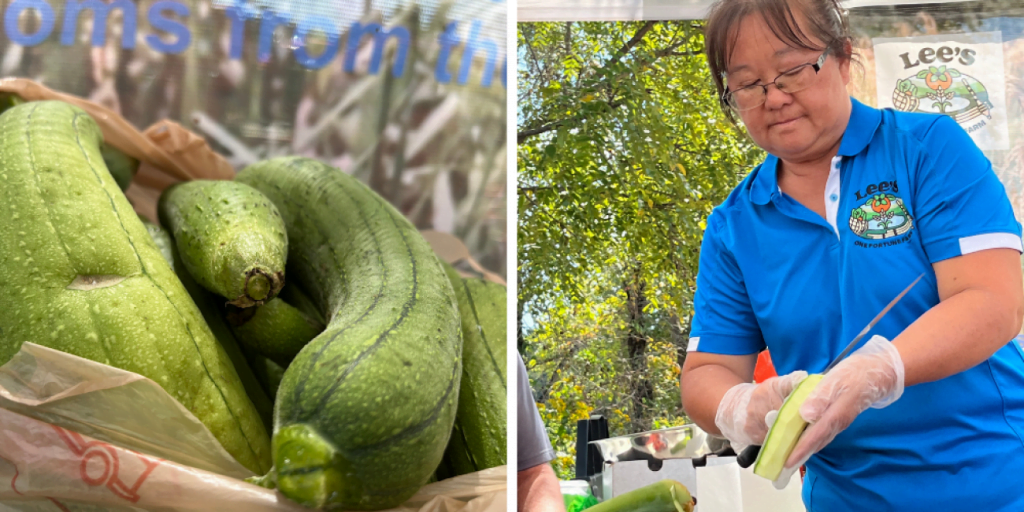Lee’s One Fortune Farm is a small family owned farm located in the foothills of the Appalachian Mountains in McDowell County. The Lee family is part of a community of Hmong farmers. The Hmong people are native to Laos and Vietnam, and many came to the United States as refugees after the Vietnam War. Western North Carolina is home to one of the largest Hmong communities in the United States. Lee’s One Fortune Farm specializes in growing Asian produce. They sell their produce at farmers markets where they encourage customers to try foods that they may have never had before!
“We practice the traditional way of growing our food – without the use of chemically manufactured pesticides, and using natural inputs only. We put into practice the means of growing our plants naturally using all organic composts. We want to make an impact with the Asian produce into the eastern area of this region,” said farmer Tou Lee.
Resources
- The Lee’s sell their produce at farmers tailgate markets throughout Asheville. Learn more about the history of this family farm and their rice.
- View Chue and Tou Lee’s story on The Legacy of Home brought to you by Watch My Home, NC on PBS.
- Bamboo shoots are the young, edible sprouts of bamboo trees, and are a popular ingredient in many Asian dishes due to their sweet flavor, crunchy texture, and rich nutritional value. Although they require a bit of preparation before you can enjoy, the unique experience of enjoying fresh bamboo shoots will be worth it! Learn how from Tou Chue here.
- Want to visit their farm in Marion, NC? ASAP’s Farm Tour will take place Saturday and Sunday, Sept. 23-24, 2023, from 12-5 p.m. both days. Purchase your pass here.
Recipe
During 2022 ASAP’s Farm Tour, Chue Lee offered cooking demos at Lee’s One Fortune Farm, including this luffa squash recipe, which she shared with us. Luffa squash is a vining gourd native to southeast Asia, but grows well in Western North Carolina. Harvested when it’s young, it can be is eaten raw or cooked.

Ingredients:
5 to 8 luffa squash
5 to 6 large white elephant ear stalks
1/2 cup green onion
2 cloves garlic
3 tablespoons neutral oil
1 teaspoon salt
oyster sauce (optional)
Directions:
Peel luffa squash and cut into bite-sized pieces. Slice elephant ear stalks diagonally into half-inch pieces. Thinly slice green onions.
In a large frying pan get the oil hot. Add garlic cloves, and swirl the pan to distribute the flavor. Add your sliced vegetables and squash and cook until they are very tender. Add salt to taste.
Serve alongside rice with oyster sauce for additional seasoning, if desired.
Activity Extension: Use Your Imagination
In this video, Chue and Tou lists some of the vegetables they grow (Asian kale, Chinese broccoli, snow peas, and sugar snap peas). Give children/students an Asian fruit or vegetable to examine. Ask them to use their imaginations to look at the produce in a different way. What do they think the fruit or vegetable looks like? Does it look like a face? An Animal? An object? Have them draw a picture of what they imagine the fruit or veggie could be. Discuss and compare what different children imagined, or make a chart or graph of their imagined creations. And don’t forget to have them try these delicious varieties!
